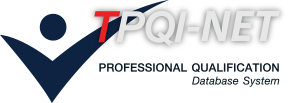หน่วยสมรรถนะ
Maintain basic light aircraft electrical systems and components.
สาขาวิชาชีพการบิน
รายละเอียดหน่วยสมรรถนะ
| 1. รหัสหน่วยสมรรถนะ | AVT-FTN-3-069ZA |
| 2. ชื่อหน่วยสมรรถนะ | Maintain basic light aircraft electrical systems and components. |
| 3. ทบทวนครั้งที่ | - / - |
| 4. สร้างใหม่ |
|
ปรับปรุง |
|
| 5. สำหรับชื่ออาชีพและรหัสอาชีพ (Occupational Classification) | |
|
|
|
| 6. คำอธิบายหน่วยสมรรถนะ (Description of Unit of Competency) | |
| This unit of competency requires the application of manual skills and the use of maintenance documentation / publications in maintaining systems and related inspection, limited testing and troubleshooting components, and removal of electrical components and installation of aircraft Basic during scheduled or unscheduled maintenance. The work can be done individually or as part of a team. Applications include fixed wing aircraft rotorcraft and fixed train basic landing skids or floats and no flight controls motor powered by a piston engine normally aspirated or gas turbine small. | |
| 7. สำหรับระดับคุณวุฒิ |
| 1 | 2 | 3 | 4 | 5 | 6 | 7 | 8 |
|---|---|---|---|---|---|---|---|
| 8. กลุ่มอาชีพ (Sector) | |
| 10 Aircraft Mechanics | |
| 9. ชื่ออาชีพและรหัสอาชีพอื่นที่หน่วยสมรรถนะนี้สามารถใช้ได้ (ถ้ามี) | |
| 103 Aircraft Maintenance: Avionics | |
| 10. ข้อกำหนดหรือกฎระเบียบที่เกี่ยวข้อง (Licensing or Regulation Related) (ถ้ามี) | |
| ICAO Doc 7192 / EASA Part 66 | |
| 11. สมรรถนะย่อยและเกณฑ์การปฏิบัติงาน (Elements and Performance Criteria) |
| หน่วยสมรรถนะย่อย (EOC) | เกณฑ์ในการปฏิบัติงาน (Performance Criteria) | รหัส PC (ตามเล่มมาตรฐาน) |
รหัส PC (จากระบบ) |
|---|---|---|---|
| 103306.01 Inspect, test/adjust basic aircraft electrical systems. | 103306.01.01Direct current (DC) electricalsystem visually or physically checked for external signs of defects inaccordance with the maintenance manual applicable to observe all safetyrequirements (WHS) and the relevantoccupational health | 103306.01.01 | 71240 |
| 103306.01 Inspect, test/adjust basic aircraft electrical systems. | 103306.01.02 Electrical system isfunctionally tested in accordance with maintenance manual for evidence ofserviceability or malfunction, system calibration or adjustments areperformed in accordance with maintenance manual, as appropriate | 103306.01.02 | 71241 |
| 103306.02 Troubleshoot, remove and install basic aircraft electrical systems. | 103306.02.01 Maintenance manual fault diagnosis guides and logicprocesses are used to ensure efficient and accurate troubleshooting to linereplacement level | 103306.02.01 | 71242 |
| 103306.02 Troubleshoot, remove and install basic aircraft electrical systems. | 103306.02.02 Specialist advice isobtained, where required, to assist with the troubleshooting process, and thecauses of faults are clearly identified and recorded properly in themaintenance documentation. | 103306.02.02 | 71243 |
| 103306.03 Basic aircraft electrical system. | 103306.03.01 The physical installation of the electrical components isperformed in accordance with applicable maintenance manual, ensuring properadjustment / alignment with mechanical interface isperformed | 103306.03.01 | 71244 |
| 103306.03 Basic aircraft electrical system. | 103306.03.02 Required maintenancedocumentation is completed and processed in accordance with standardenterprise procedures | 103306.03.02 | 71245 |
| 12. ความรู้และทักษะก่อนหน้าที่จำเป็น (Pre-requisite Skill & Knowledge) | |
|
|
|
| 13. ทักษะและความรู้ที่ต้องการ (Required Skills and Knowledge) | |
|
(ก) ความต้องการด้านทักษะ
(ข) ความต้องการด้านความรู้
|
|
| 14. หลักฐานที่ต้องการ (Evidence Guide) | |
|
Assessment methods |
|
| 15. ขอบเขต (Range Statement) | |
|
|
|
| 16. หน่วยสมรรถนะร่วม (ถ้ามี) | |
| N/A | |
| 17. อุตสาหกรรมร่วม/กลุ่มอาชีพร่วม (ถ้ามี) | |
| N/A | |
| 18. รายละเอียดกระบวนการและวิธีการประเมิน (Assessment Description and Procedure) | |
|
• This shall be established via the records in the Log of Industrial Experience and Achievement or, where appropriate, an equivalent Industry Evidence Guide. |
|
